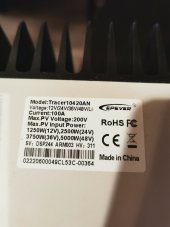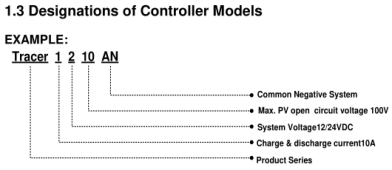At the end of the spec sheet ''2. The voltage point is for 12V system, please *2 in 24V system, *3 in 36V system, *4 in 48V system.''The AN controllers are sold in several different voltage ratings; 60V, 100V, 150V, and 200V.
Does this also apply to Voc?
The spec sheet for their auto ranging pwms is clearer with Voc proportional to battery v
The manual for my AN's says the controller will be damaged if the PV input exceeds 40v with batteries disconnected.
I read this as- ' A 12v system may survive battery disconnection when using the usual 12v panels (Voc<22v). 24v systems may and 48v systems certainly will not. Unsuitable for batteries with BMS at the higher voltages!!'
Last edited:





